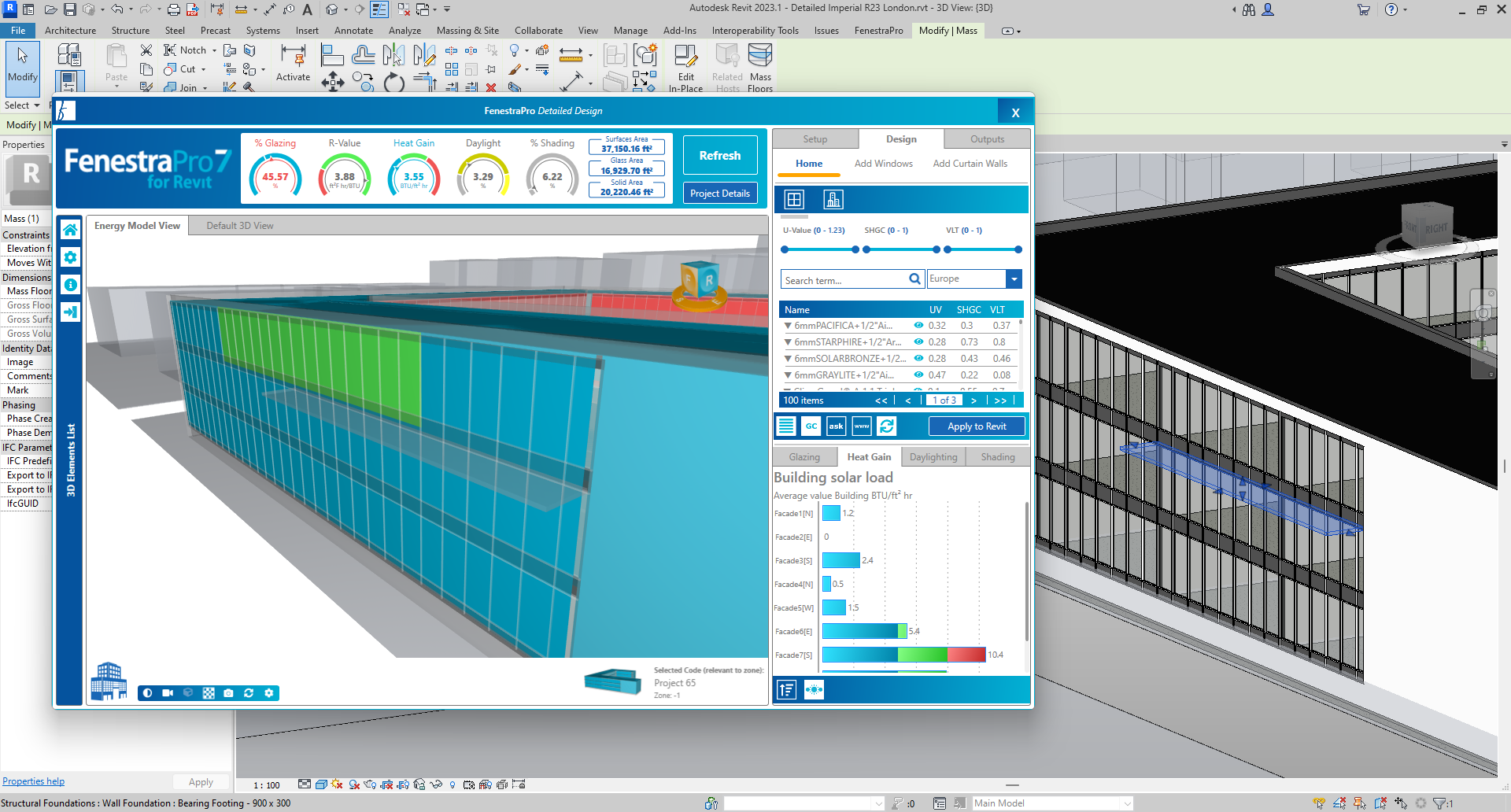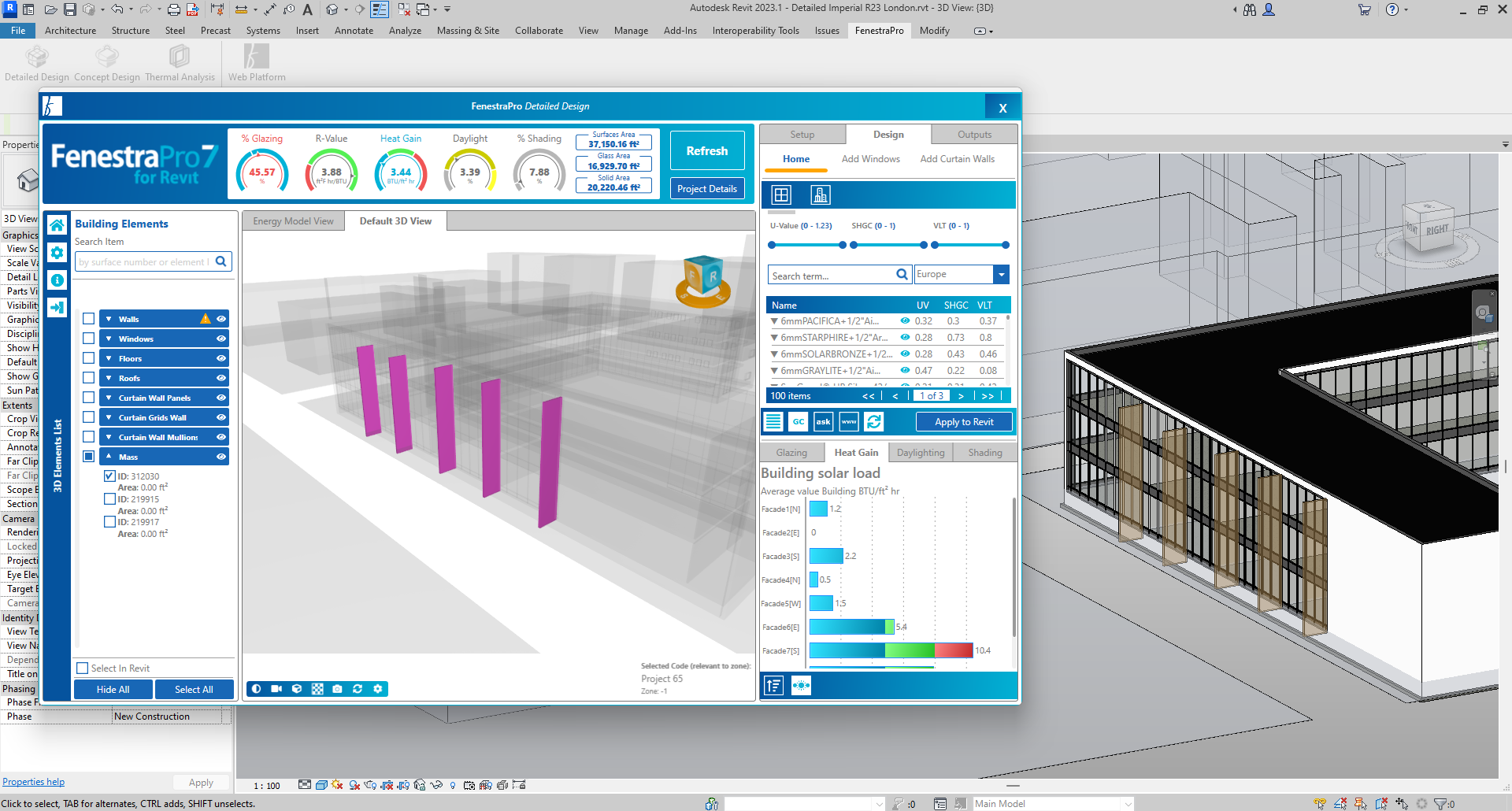Detailed Models
Mass Shading devices (such as vertical fins or horizontal canopies) may be added to Detailed Models. This may be a quick way to test results as the shade is adjusted. These objects will affect Heat Gain results when they are placed adjacent to windows or curtain walls.
FenestraPro should be closed before you add a mass object such as a simulated shading device, since a new Energy Model will need to be created each time the model is modified. When FenestraPro is opened again, Heat Gain should be recalculated in the Building Manager with Calculate Shading Factors checked. The results on the Dashboard and Charts will be different compared to the model without any shading objects included. If you find that the results are not updating on the Dashboard, please close the application and relaunch the Add-in. You can also check the shade effect in Detailed models using the Shading Animation Viewer.
Mass Canopy shading canopies will affect the results for Heat Gain and Daylighting
Mass Canopy shading effects viewed in the Shading Animation Viewer
Mass Vertical Fins will affect Heat Gain only
Note: Vertical Fins modeled as mass objects on Detailed models will currently NOT affect the Daylighting results. Changing the the depth of the shade devices will effect the Heat Gain results. If new devices are added to the model, the application should be closed and relaunched to create a new energy model in Revit that will include the change in project geometry.

Trees
The same principle may be used to create trees or external objects that will create shade effects and change the results.
Mass objects may be used as trees (modeled as cone shapes) in Detailed models. These will affect the results also by reducing Heat Gain and Daylight values.





